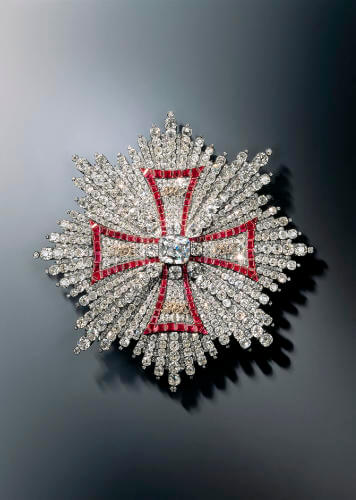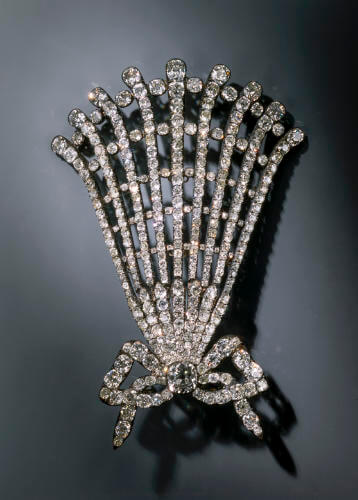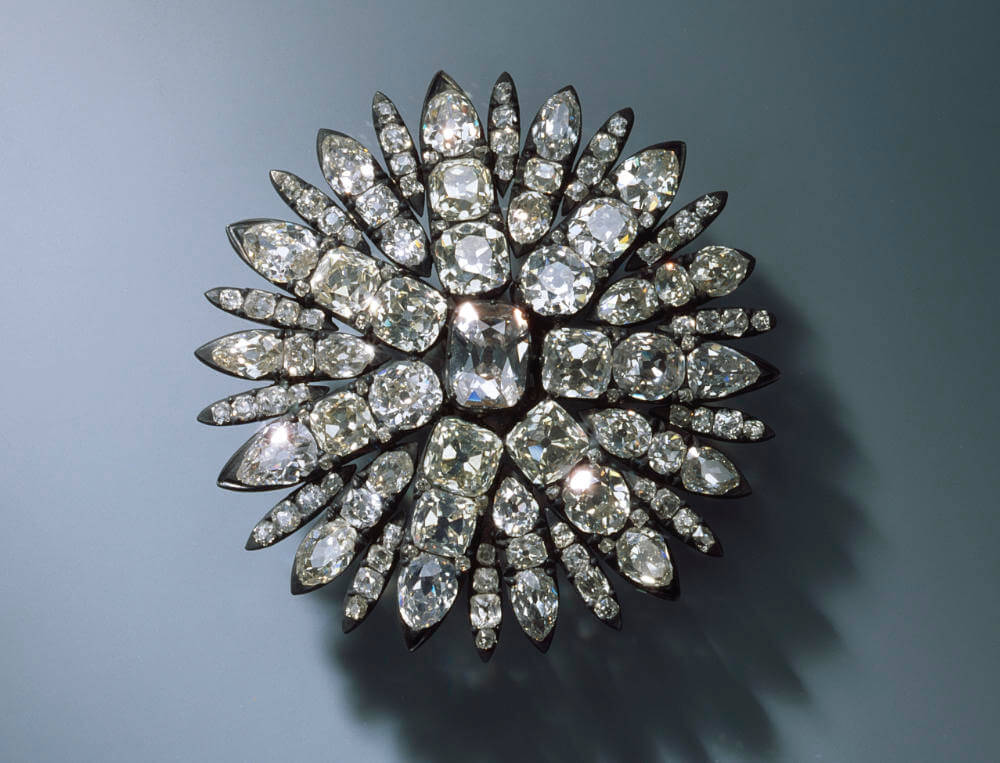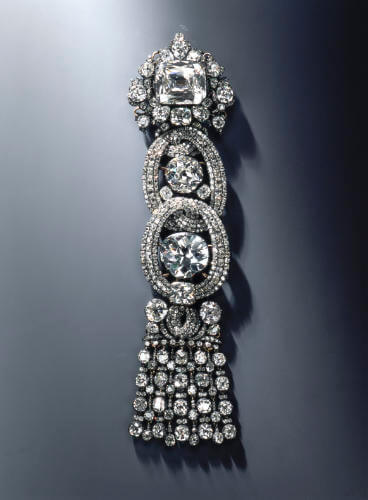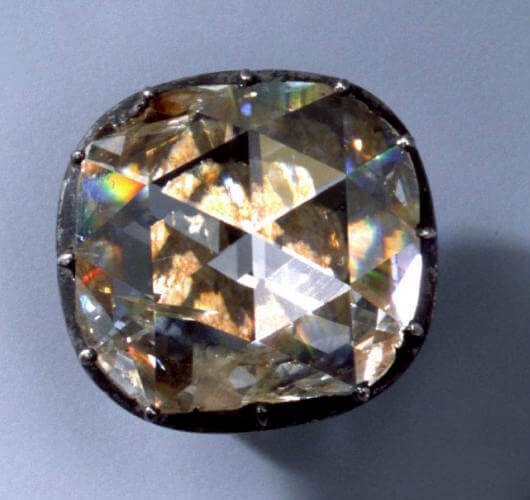Verdicts in the Dresden Jewel Heist Case
The burglary of the Green Vault in Dresden made headlines around the world in 2019. Experts suspected that the stolen jewels were likely to be irretrievably lost. When the authorities identified six men as suspects about a year later, there was no trace of the loot. But then there was a decisive turn of events that also influenced the verdict.
Content
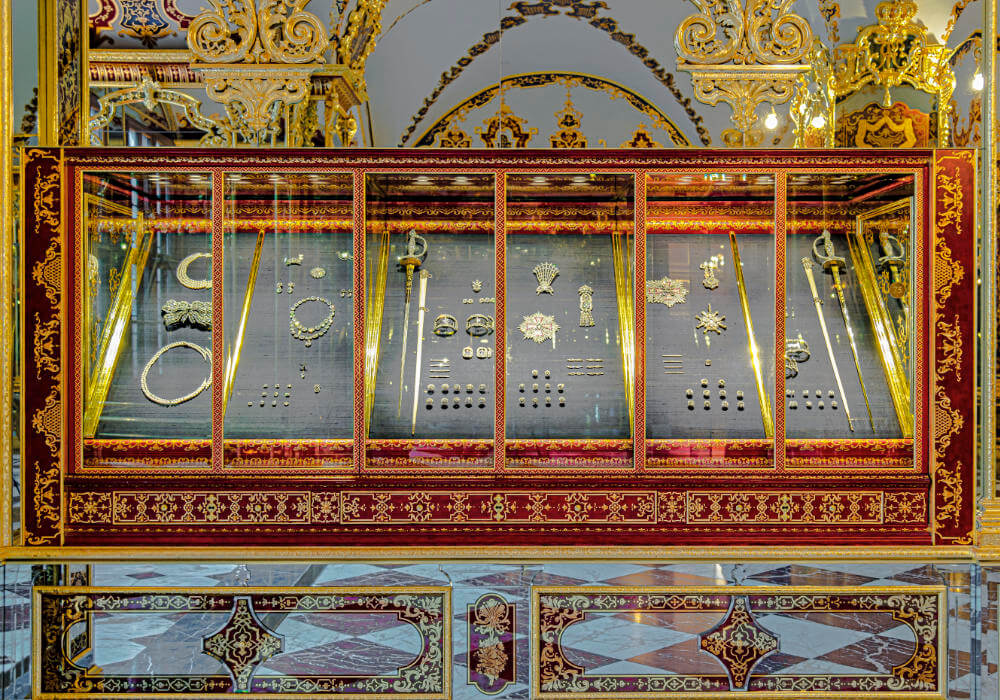
This is how the exhibition looked before the burglary: Showcase with 3 sets: the Queens’ Diamond Jewellery and Pearls (left), diamond set (centre), diamond rose set (right). Historic Green Vault, Jewel Room (view before 25 November 2019). © Staatliche Kunstsammlungen Dresden, Photo: Hans Christian Krass.
Lenient Verdicts In Exchange For the Loot
Five members of the Remmo clan were accused of having carried out the burglary together with an accomplice. The prosecution had demanded prison sentences of up to six years and eight months, while the defence lawyers asked for prison sentences of less than six years.
The defendants did not cooperate for a long time during the trial. Only when they became aware of the severity of the threatened sentences, their attitude changed. The prosecution and the defence agreed on a deal: comprehensive confessions and the return of the loot should lead to lenient sentences.
Wissam Remmo, who is still serving his prison sentence for the break-in at the Bode Museum and the theft of the giant Maple Leaf, claimed that the break-in in Dresden was to finance his cocaine consumption. Another motive had been a desire for fame, the young men had wanted to brag about their coup. They had no insider knowledge or accomplices among the museum staff, but simply spied out the crime scene regularly.
And What About the Dresden Jewels?
The value of the stolen 21 pieces of jewellery with a total of 4,300 diamonds and brilliant-cut diamonds was reported in the media to be more than 113 million euros. Experts had expected that the thieves would want to sell their loot and break the jewellery into its component parts for this purpose. Curiously, this did not happen – or only partially. At least 31 individual parts into which the precious objects were broken were returned to the museum at the end of 2022, including a hat ornament (heron’s cap) and the famous breast star of the Polish Order of the White Eagle from the brilliant-cut diamond set.
Since the objects are pieces of evidence in the criminal proceedings, they could not be reissued at first. As a restorer explained in court, the jewels show different states of preservation, with external influences ranging from mechanical damage to moisture penetration. However, these damages can be almost completely restored. Nevertheless, she provisionally put the total damage to the restituted jewellery at 22 to 25 million euros.
Still missing are the Brilliant Necklace of Queen Amalie Auguste (1824; preserved in parts), the Large Chest Bow of Queen Amalie Auguste (1782), the Epaulette with the Saxon White (between 1782 and 1789), the Large Diamond Rose, two skirt buttons from the Diamond Rose Set as well as individual small parts.
The special commission “Epaulette” entrusted with the investigation will continue its work and is still searching for the missing jewellery pieces as well as for possible accomplices.
And What Awaits the Defendants?
In view of the plea bargain, five defendants were sentenced to prison terms of between four years and four months and six years and three months. Wissam Remmo, who is in prison, was exempted from the deal, and the sixth accused was acquitted. In civil proceedings, the Free State of Saxony will try to order the defendants to pay the damages, which are estimated at 89 million euros.




